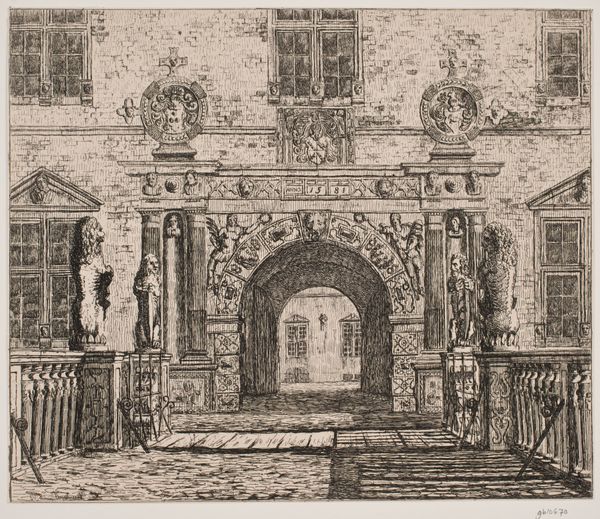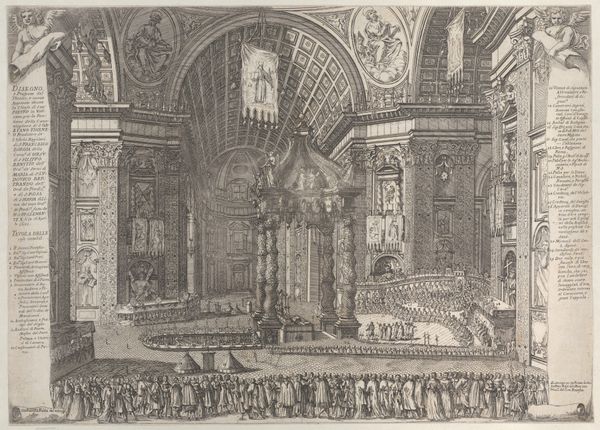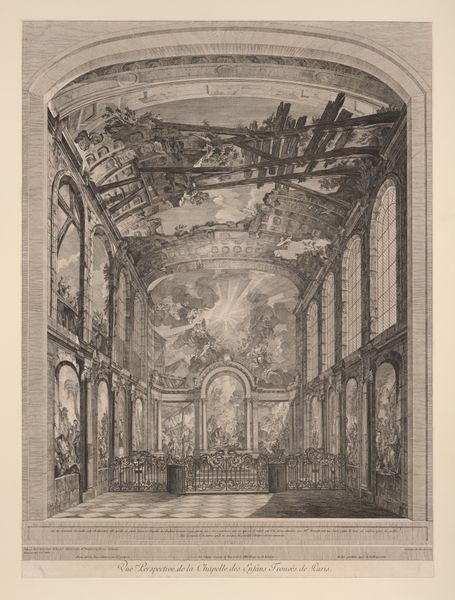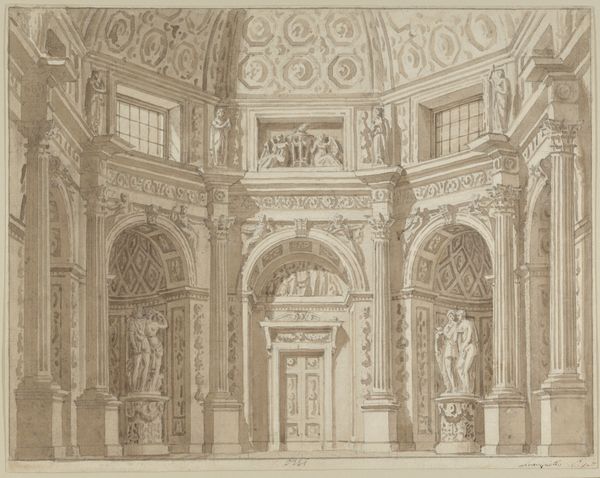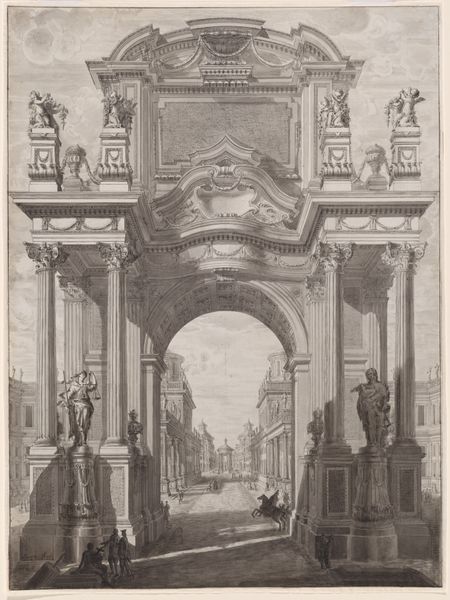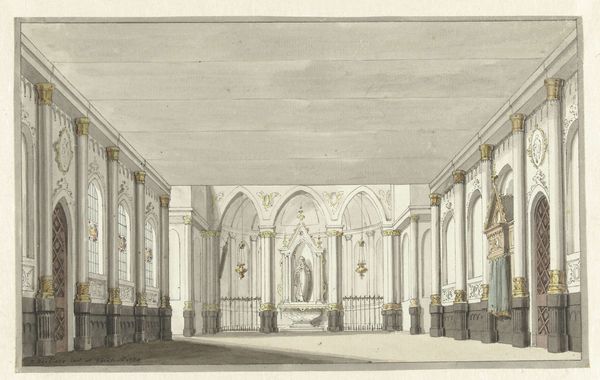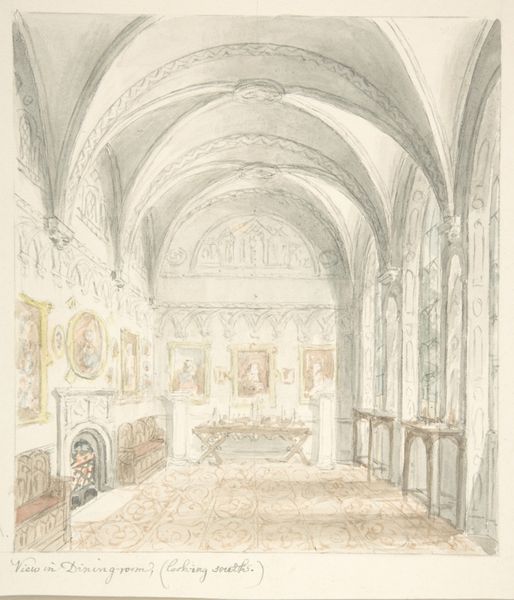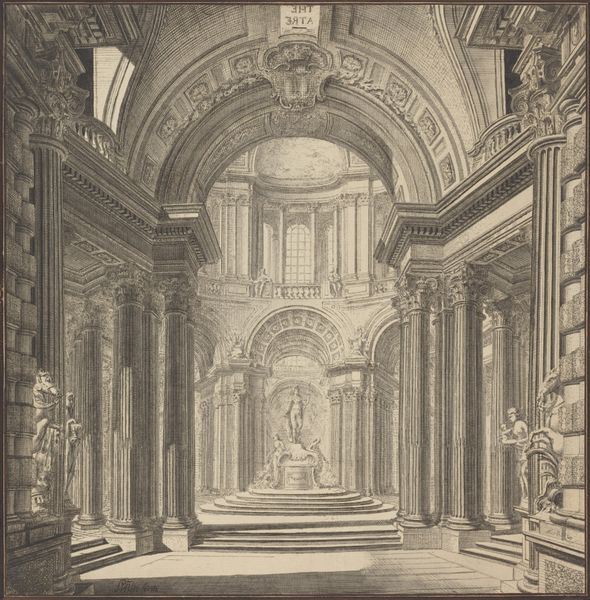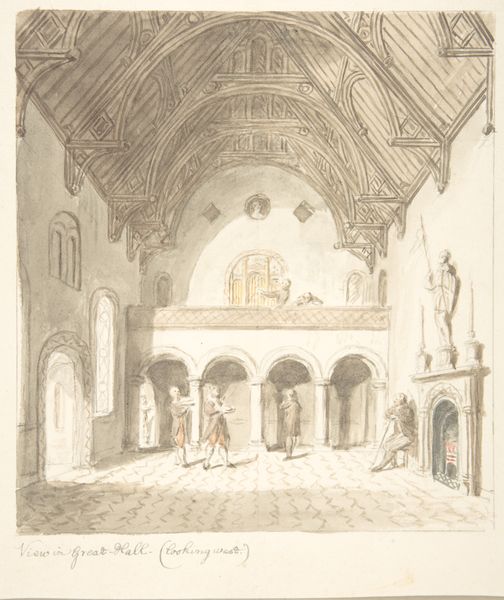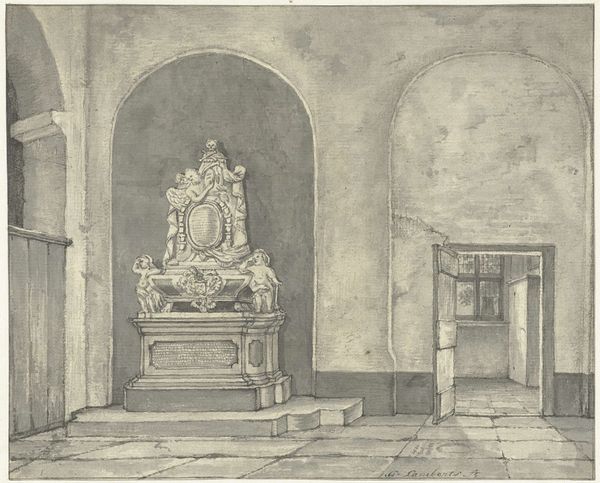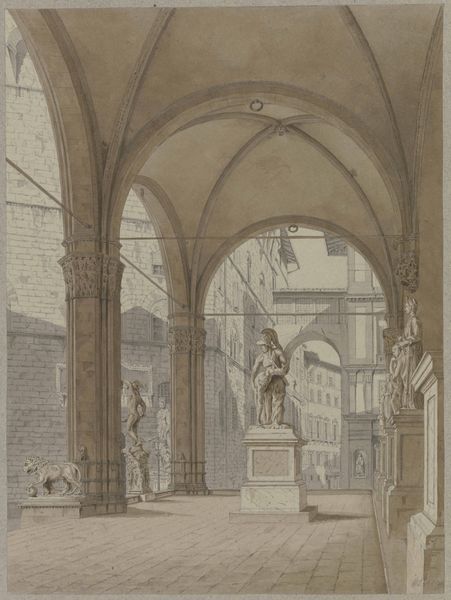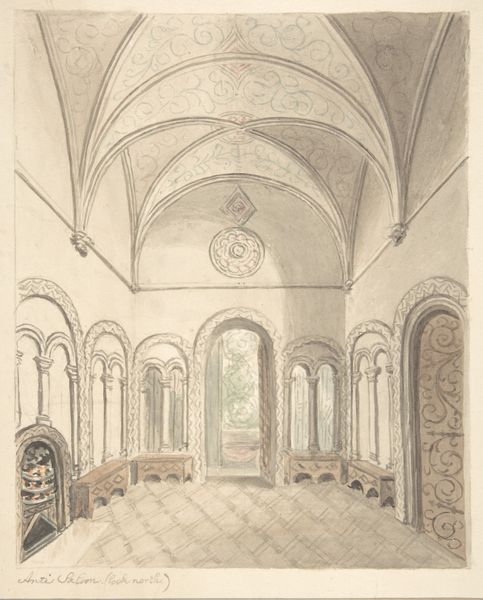
drawing, print, etching, engraving, architecture
#
drawing
# print
#
pen sketch
#
etching
#
engraving
#
architecture
Dimensions: 198 mm (height) x 225 mm (width) (plademaal)
Editor: This etching from 1839, "Indkørselsporten på Vallø" by Thorald Læssøe, depicts the entrance gate at Vallø. It feels very precise and controlled, but also a little imposing, with those stoic lion sculptures flanking the gate. What strikes you when you look at this work? Curator: What stands out for me is the visual dialogue between the architecture itself and the act of its representation through printmaking. Look at how the artist meticulously recreates the textures of brick and stone, emphasizing the enduring nature of power and institutions embedded in this gate. Consider the social function of such structures in 19th-century Denmark, when ideas of nationhood and historical continuity were increasingly important. What purpose might Læssøe have had in documenting this particular gate? Editor: Maybe it was about preserving a sense of national identity, idealizing Danish heritage through this grand architectural motif? Were these estates often associated with a certain kind of social status at the time? Curator: Absolutely. Vallø, historically a noble estate transformed into a charitable foundation for unmarried noblewomen, signifies power, privilege, and a carefully constructed social order. This print serves to disseminate and perhaps romanticize those concepts within the broader public consciousness. Notice the inscription of 1581 atop the gate: How does that function, historically and visually? Editor: It's interesting to consider how including that older date establishes this link to a significant historical legacy and legitimizes the current power structure, while its circulation as a print further spreads the message. Thanks, I hadn't considered how much social messaging could be contained in architectural depiction. Curator: It reveals how seemingly objective representations are always embedded in the social and political realities of their time. Recognizing these layers allows us to actively engage with historical narratives that might be obscured otherwise.
Comments
No comments
Be the first to comment and join the conversation on the ultimate creative platform.
